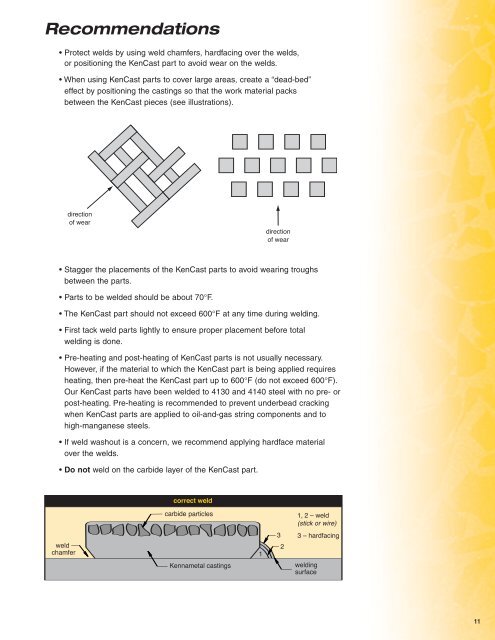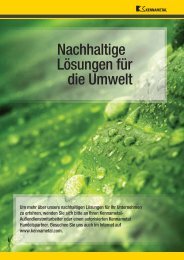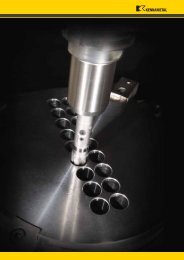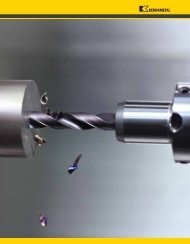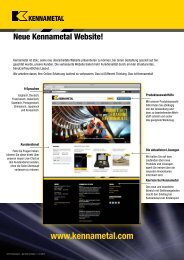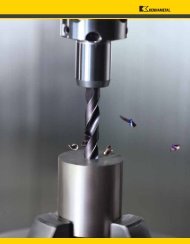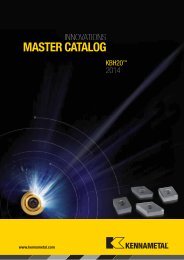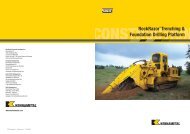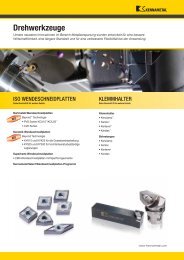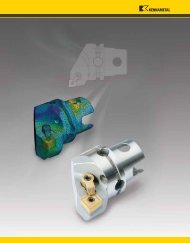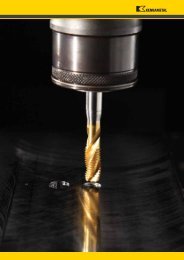KenCast Catalog (B02-33) - Kennametal
KenCast Catalog (B02-33) - Kennametal
KenCast Catalog (B02-33) - Kennametal
You also want an ePaper? Increase the reach of your titles
YUMPU automatically turns print PDFs into web optimized ePapers that Google loves.
Recommendations<br />
• Protect welds by using weld chamfers, hardfacing over the welds,<br />
or positioning the <strong>KenCast</strong> part to avoid wear on the welds.<br />
• When using <strong>KenCast</strong> parts to cover large areas, create a “dead-bed”<br />
effect by positioning the castings so that the work material packs<br />
between the <strong>KenCast</strong> pieces (see illustrations).<br />
• Stagger the placements of the <strong>KenCast</strong> parts to avoid wearing troughs<br />
between the parts.<br />
• Parts to be welded should be about 70°F.<br />
• The <strong>KenCast</strong> part should not exceed 600°F at any time during welding.<br />
• First tack weld parts lightly to ensure proper placement before total<br />
welding is done.<br />
• Pre-heating and post-heating of <strong>KenCast</strong> parts is not usually necessary.<br />
However, if the material to which the <strong>KenCast</strong> part is being applied requires<br />
heating, then pre-heat the <strong>KenCast</strong> part up to 600°F (do not exceed 600°F).<br />
Our <strong>KenCast</strong> parts have been welded to 4130 and 4140 steel with no pre- or<br />
post-heating. Pre-heating is recommended to prevent underbead cracking<br />
when <strong>KenCast</strong> parts are applied to oil-and-gas string components and to<br />
high-manganese steels.<br />
• If weld washout is a concern, we recommend applying hardface material<br />
over the welds.<br />
• Do not weld on the carbide layer of the <strong>KenCast</strong> part.<br />
11


